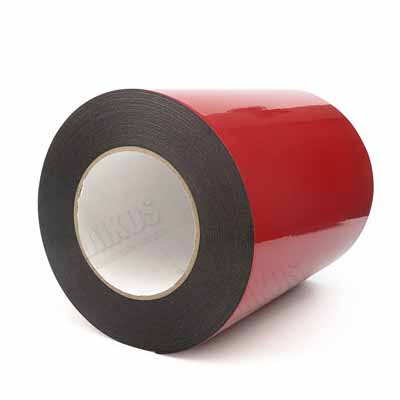Aluminum foil tape is a versatile adhesive tape commonly used for sealing ducts, pipes, and other construction materials. Its adhesive properties make it an ideal product for various types of insulation, including thermal and acoustic insulation. This guide provides comprehensive knowledge about aluminum foil tape, including its composition, types, properties, applications, production process, and market scenario.
Aluminum foil tape usually consists of three layers, namely; aluminum backing, an adhesive layer, and a release liner. The aluminum layer is responsible for the tape's reflective properties, making it suitable for insulation purposes. The adhesive layer ensures that the tape sticks firmly to the surface, while the release liner protects the tape from sticking to other surfaces during storage.
Aluminum foil tape is available in different types, depending on the type of adhesive used and the thickness of the aluminum layer. The most commonly used adhesives are rubber, silicone, and acrylic. The thickness of the aluminum layer also varies, with some tapes having a thin aluminum layer, while others have a thicker layer for improved insulation properties.
The properties of aluminum foil tape are derived from its composition. The tape's reflective properties make it an excellent option for insulation purposes, as it can reflect up to 97% of the radiant heat. The tape is also waterproof, making it suitable for outdoor applications. It is heat resistant, with some tapes capable of withstanding temperatures of up to 600℉. Additionally, the tape is resistant to chemicals and UV degradation.
Aluminum foil tape has a wide range of applications in various industries, including construction, automotive, aerospace, and electrical industries. In construction, tape is used for sealing ducts, pipes, and other construction materials. It is also used for insulation purposes in thermal and acoustic insulation. In the automotive industry, tape is used for sealing and repairing various components, including radiators, air conditioning systems, and exhaust systems. In the aerospace industry, the tape is used for insulation and protection purposes in spacecraft and other aerospace vehicles. In the electrical industry, tape is used for wrapping and covering cables and wires.
The production process of aluminum foil tape involves coating the adhesive layer on the release liner, followed by the aluminum layer. The adhesive is usually applied using a hot melt coating process, while the aluminum layer is applied using a laminating process. The tape is then cut into the desired size and packaged for shipping.
Aluminum foil tape is a versatile adhesive tape that has found numerous applications in various industries. Its reflective and insulation properties make it ideal for use in thermal and acoustic insulation, while its waterproof, heat-resistant, and chemical-resistant properties make it suitable for outdoor applications. The market for aluminum foil tape is expected to continue growing, driven by the growth in the construction, automotive, and aerospace industries, as well as technological advancements.




